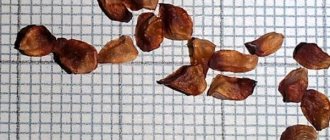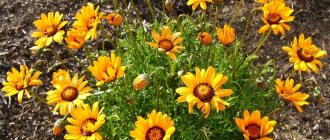Botanical characteristics
Matthiola (Levy) is a flowering plant from the Cruciferous (Cabbage, Brassicaceae) family. It is a small bush 100 cm high. Straight branches are densely covered with foliage. Below, next to the roots, they harden and become woody. The plant has long, elongated leaves of a rich green hue. Their edges can be smooth or jagged. Fragrant flowers of unusual shape consist of 4 petals. Their colors are incredibly diverse: gillyflower flowers can be white, yellow, red, purple, blue, brown, pink, etc.
Matthiola blooms profusely. Different types and varieties of gillyflower are both annual and perennial. The most common annuals are all varieties of summer gillyflower. Perennial matthiola is represented by many different types: fragrant, winter, gray, etc.
Levkoy, matthiola, night violet
The word "levkoy" translated from ancient Greek means "white violet". This flower received its scientific name in honor of the Italian doctor and botanist Pietro Mattioli. The plant is also called “night violet”.
Levkoy fragrant
Description
Levka belongs to the cruciferous or cabbage genus. During the flowering phase, the ornamental plant is covered with fragrant flowers; their aroma cannot be confused with other plants.
Botanical species of gillyflower are found both annual and perennial. There are about 50 plant species.
Levkoy occurs as a herbaceous species or shrub with vertical branches 20-80 cm long. Felt-pubescent or bare stems are highly branched. The leaves of the plant are elongated, lanceolate. The leaf shape is entire or serrated.
The flowers are colored white, yellow, pink, lilac, dark purple, coral and form spike-shaped or racemose inflorescences. The flowers are simple or double in structure. Flowering occurs in the summer and lasts until the end of October.
Non-double types of matthiola are good honey plants, and double ones are especially decorative and elegant.
They are distinguished by their seeds. Double flowers (pictured) have wrinkled and non-flat seeds. Terry gilly leaves emerge 2-3 days earlier than ordinary ones. They are marked and planted separately.
Levkoy terry
After flowering, a fruit resembling a pod begins to form. The seeds inside are narrow-winged and flat. They are very light, almost weightless. After all, 1 g of weight contains about 700 seeds.
Popular types and varieties
Marigolds - planting and care in open ground
About 400 varieties of matthiola are known. They differ from each other in the color of the petals, the shape of the leaves, the duration of flowering and other characteristics.
Description of types and varieties:
- Grey-haired leaves (Matthiola incana) - has a branched stem 20-50 cm high, but sometimes plants up to 80 cm high are found. The leaves are grayish-green in color and grow up to 5-18 cm in length and 1-4.5 cm in width. The stem and leaves are covered with fluff. Flowers can be double or simple. They are collected in inflorescences of 10-60 pieces each. Each flower consists of 4 sepals (1-1.2 cm long), 4 petals (2-3 cm long and 1-1.5 cm wide), 6 stamens and a pistil. The color of the petals can be lilac, pink, white, red, purple. The “Bush” variety of grey-haired gillyflower is widely known.
- Levkoy fragrant is a rare species listed in the Red Book. This is a perennial plant 20-50 cm high, covered with thick white fluff. It has yellow or brown petals 2-2.5 cm long. The leaves are located close to the roots.
- Autumn gillyflower - suitable for planting in a greenhouse or open ground. It is planted in March or April, but it blooms only at the end of summer and blooms until frost.
- Winter - it is advisable to grow it in indoor pots. The seeds should be sown in mid-summer, then it will begin to bloom in the spring of next year. When warm weather sets in, Levy can be transplanted into open ground.
- Matthiola longipetala - famous for its extremely strong aroma. It has a straight stem, densely covered with leaves and small flowers of white, blue or light lilac shades.
- The Thumbelina variety is a miniature bush 35 cm high covered with double flowers of various bright shades.
- Summer - ideal for growing in open ground. It can be planted in the spring and will bloom throughout the summer.
Appearance of grey-headed gillyflower (matthiola incana)
On a note! No less popular among gardeners are such decorative varieties as Step, Royal Mixture, Temptation and Caprice.
In turn, summer gillyflower is divided into several groups:
- Bouquet - inflorescences are located on the same level and form a lush bouquet of dense double flowers with a diameter of 3.5 cm.
- Gigantic - a wide pyramidal bush covered with thick leaves and large double flowers.
- Single-stemmed - an upright plant with a single stem 80 cm high. Its diamond-shaped leaves may have wavy edges. Flowers with a diameter of 6 cm bloom in June for a month.
- Pyramidal - large branched bushes similar in shape to a pyramid. Among them there are dwarf, semi-tall and large-flowered giants. They all grow bright, lush flowers.
- Quedlinburg - double varieties with light green leaves. Among them there are tall and short, bush-like and pole-shaped varieties that can bloom in early summer or autumn.
- Erfurt (short-branched) - bushes are densely covered with foliage and have very strong branches. Small but numerous flowers bloom from July to September.
- Large-flowered gigantic tree-like - the stem begins to branch from the middle. The plant reaches 1 meter in height. Densely double flowers with a diameter of 6 cm bloom throughout 2 summer months.
- Spreading - a wide bush with spreading branches grows up to 40-60 cm in height. Among them there are remontant, late large-flowered and double varieties.
Matthiola bicornuum
How to grow terry gillyflower
Most flower lovers would like to see unusual forms of familiar plants on their plots. For example, terry gillyflower has a clear advantage over ordinary gillyflower due to the fact that its flowers look more decorative, fluffier, and larger.
In general, gillyflowers are annual or perennial plants belonging to the Cruciferous family. Levkoy flowers are very beautiful, bright, and exude a wonderful aroma.
And when these flowers are also double, the desire to have this plant in their garden does not leave many summer residents.
However, getting terry gillyflower is not as easy as it might seem.
The fact is that only ordinary plants with simple flowers produce seeds, but the terry variety of gillyflower is absolutely sterile; seeds are not formed on such plants.
How, you ask, is it even possible to grow a terry variety of gillyflower?
It turns out that you can track how gilly leaves will grow at the stage of formation of cotyledon leaves on the sprouts.
It is necessary to collect seeds from ordinary gillyflowers, the flowers of which have only 4 petals. Then the seeds are sown, and when they begin to germinate, that’s when the fun happens.
If the sprouts have light green leaves and grow large, then this is the desired terry form of gillyflower. And if bright green leaves form on the sprouts, and the seedlings are not tall in growth, you have sprouted ordinary simple left-handed leaves.
In order for the flowering to be lush, it is necessary to plant terry gillyflower in a sunny place in the garden. It is also necessary to ensure that the soil around the plants does not dry out, but that water does not stagnate.
MegaOgorod.com
Growing from seeds
Such a beautiful and fragrant flower as gillyflower will become a magnificent decoration of the garden. Planting and care will require responsibility and careful attention from the grower.
Periwinkle - planting and care in open ground
It will take a lot of work, time and effort to grow Levka. Growing from seeds is painstaking work, which is why this method of propagation is rarely used.
When and how to sow
The time for sowing is the last days of March or the beginning of April. To grow in a greenhouse, summer leaves are sown in January. Autumn varieties can be sown in July or August.
How to sow:
- Soak each seed in water for 24 hours.
- Wrap the seeds in damp gauze and place in the refrigerator for 2-3 days.
- Prepare the soil in the box: mix three parts turf soil and one part sand. Before sowing, the soil is watered.
- Make a groove 50 mm deep in the ground, sow the seeds and sprinkle them with substrate.
- Cover the box with plastic wrap and place it in a shaded place where the temperature is constantly maintained at 20-22 ℃ above zero.
- Seeds can sprout in 5-14 days.
Note! By the shape of the pods and ripened seeds, you can determine whether the flower will be double.
Signs of terry:
- short and small pods;
- seeds arranged in 2 rows on a pod;
- fragile weak bushes.
Thumbelina as a garden decoration
Seedling care
After the sprouts sprout, they are opened by removing the covering film and the box is placed on the windowsill so that the plant has light. Seedlings can be kept at a temperature of 10-12 ℃ above zero.
2 days after the sprouts appear, they are watered. Then you need to wait another 10-12 days until the seedlings get stronger. Then you need to make a pick: each sprout is transplanted into a separate small pot. A drainage hole must be made at the bottom of the picking container. Then soil is poured there. You will need 2 parts of leaf soil, 2 parts of turf soil and 1 part of sand. To strengthen the roots of young leaves, hydrogel should be added to the soil. Seedlings of late matthiola varieties are planted immediately in open ground.
When each sprout grows 2 leaves, the plant needs to be fed. To do this, prepare a solution: 0.3 g of boric acid, 0.3 g of copper sulfate, 0.1 g of manganese sulfate and 0.1 g of zinc sulfate are dissolved in 1 liter of water.
It is important to know! Levka needs to be hardened 10-14 days before planting in open ground. Every day for several hours they open the window on the balcony where the seedlings stand.
Pure gold gesso
How to sow seeds: step-by-step instructions
Sowing of seeds is carried out no later than the beginning of March. It is necessary to prepare for this work in advance. The steps must be performed in the following order:
- Preparing containers. To sow seeds, take containers with holes to remove excess water.
- Preparing a soil mixture that must be moisture- and breathable. It is necessary to prepare the soil substrate by mixing turf soil with sand in a 3:1 ratio. No humus, compost, or other organic matter should be added to this mixture. If you purchase ready-made soil, it is recommended to add sand to it to prevent excessive soil compaction. Nevertheless, there remains a risk of seedling death from blackleg. To be on the safe side, pour the finished substrate with a solution of potassium permanganate and then dry it.
Seed stratification is not necessary, but this technique will increase seed germination and speed up their germination:
- Place the seeds in a flat dish covered with a napkin, add water, cover slightly, and leave for a day.
- After swelling, place the seeds wrapped in a moistened napkin in the refrigerator on the bottom shelf, where the temperature is from 2 to 5 ° C. Stratification should last several days to a week.
- Ready seeds should be sown in moist soil, deepening them half a centimeter and placing the seeds at a distance of 3 cm.
- There is no need to water. Cover the container with the crops with glass or film and place it in a warm place where the temperature is 20-22 °C.
- Shoots need to wait from 4 days to 2 weeks.
Seed stratification is carried out taking into account the conditions of the region
Planting in open ground
Common cornflower - planting and care in open ground
At the end of May, the gilly leaves are replanted. Planting and care in open ground will take time. It is advisable to plant seedlings in the evening or on a cloudy day, since bright sunlight can burn them.
You need to choose a bright area where moisture does not stagnate. Soil acidity (pH) should be neutral or slightly alkaline. Soddy-loamy or soddy-sandy loam soil is ideal.
You should not plant gillyweed in places where other plants from the Brassica family previously grew, because they may suffer from cruciferous flea beetle.
It is necessary to water the soil with a weak solution of potassium permanganate and the preparation “Hom” to protect the plant. Then prepare holes 5-10 cm deep at a distance of 15-30 cm from each other. These holes are filled with water, seedlings are planted in them, the roots are covered with soil and compacted tightly.
Watering and loosening the soil
Mattiola is very sensitive to any changes in soil moisture. This plant is difficult to tolerate both drought and stagnant moisture. It is necessary to regularly water the flower at the root with a small amount of water in the morning.
Note! After watering, it is advisable to weed the weeds and loosen the soil with a small rake. In the second year after planting, you can mulch perennial levka with pine bark or sawdust.
Levka is often placed in a flower bed
Feeding and replanting
In spring, matthiola is fed with complex mineral fertilizers. Ash is well suited as a top dressing. When the gillyflower blooms, it needs to be additionally fed with potassium-phosphorus fertilizer.
Important! Levy transplants are not only not useful, but also harmful. This plant has a delicate root system that is easily injured.
The only transplant that needs to be done is planting the seedlings in open ground.
Composition in landscape design
When to plant gillyflower seeds so that you can enjoy flowers at the beginning of summer?
The advantage of gillyflowers is that they can bloom throughout the entire summer season, so they are a welcome decoration in gardens. For this, plants require an open sunny place and simple care. Being an annual plant with a long development period, gilly leaves enter the flowering phase only three months after planting. Therefore, the preparation of high-quality seedlings grown at home is of great importance.
Pests and diseases
Levkoy is a strong, hardy plant, but it also needs to be protected from dangerous infections and insect pests.
Dangers:
- The cruciferous flea beetle is a pest that threatens matthiola. It is necessary to treat Levka with an ash solution three times with a break of 4-5 days between each spraying. If there are a large number of insects, the flower is treated with insecticides.
- Blackleg is an incurable disease that affects the root and lower part of the stem. For prevention, before planting, the soil is watered with the preparation “Hom”.
Occasionally, flower growers are faced with a problem when there are few gillyflower flowers and they are all very weak. Then it is very important to find out why the gillyflower does not bloom. This happens extremely rarely. Most often, the reason is poor soil that lacks fertilizer.
Caring for gillyflower in the garden
The matthiola flower needs some care. It includes the following items:
- Systematic watering. Drought has a bad effect on this representative of the flora. When it is planted, it is not recommended to water it immediately; it is better to do it after 4-5 days. It is not recommended to water frequently, but due to too infrequent watering, the flowers will become small, fall off, bloom less, and the leaves will curl and wither. It is recommended to water the plant in the morning right down to the roots. Then within a day the water will dry out and the excess will evaporate. When the days are very hot, you need to water extra.
- Loosening the soil and removing weeds. Young seedlings need to be thinned out in such a way as to maintain a distance of 20-30 centimeters. Those that are dug up can be moved to another place in the garden. Only terry representatives of the species should be left during such work. In about 3 days there will be simple flowers. Terry ones have light cotyledons, while simple ones have dark colors. Based on these characteristics, varieties can be distinguished.
- Timely fertilization. Mineral fertilizer should be applied monthly. You can also use humus and mullein for such purposes. If you overdo it with fertilizers, then there will be more greenery and fewer flowers. It is better not to use manure, otherwise fusarium may affect the matiolla. This is a disease of fungal origin. Before planting in the fall, the soil can be fertilized with wood ash.
- Trimming. When preparing the matiolla for wintering, it needs to be pruned. Shrubs are completely pruned and removed from the ground before they completely wither. The place where the flower grew is dug up. Where the climate is warmer, shrubs are pruned almost flush with the ground. Some gardeners move them into containers and place them indoors. Then, throughout the winter, matthiola grows and blooms.
When the seeds have sprouted and two cotyledons have formed, the sprouts dive, pinching off the roots. The plant is moved into a container without a bottom. You need to be careful, because this plant behaves sensitively during transplantation.
By growing and caring for Levka in the correct way, you will be able to admire its beauty all summer, or even longer.
Reproduction of gillyflower
Gardeners prefer double flowers, but they do not bear fruit and there are no seeds. Most often, seeds are used to propagate mathiolla. Those who already have gardening experience scatter seeds into open ground every 14 days. This allows you to enjoy flowers for a long time.
There is an opinion that the most luxurious gillyflower plant comes from seeds that have an irregular shape. This is a terry variety. Those varieties that bloom late are advised to be grown in warmer conditions, for example at home.
Diseases and pests
- The cruciferous flake is a small, dark-colored insect. She eats leaves, flowers, buds, forming holes. The plant loses its beauty. As soon as signs of the disease are noticed, you need to fight it immediately. To do this, the leaves are treated weekly on all sides with an ash solution. This work is carried out for 3 weeks. Tobacco dust is also successfully used by scattering it under bushes. If none of this helps, then they switch to insecticides.
- Blackleg attacks the stem below, turning it dark and then completely black. This disease is incurable. If damaged, the bush should be removed from the ground and destroyed. Before planting, it is better to treat the soil with Hom. This preventive measure reduces the risk of disease.
- White butterfly and cabbage butterfly greatly spoil the appearance of the flower. For control, herbal preparations or insecticides are used.
- Clubroot - may appear if a representative of the cruciferous family grew before the matiolla.
How to prepare for winter
In cold northern climates, annual gillyflower is most often grown. In autumn, the plant is removed from the ground along with the roots and thrown away. Dig up the growth site. Perennial flowers are transplanted into a tub or pot and placed in the room.
Additional Information! In warm climates, you don’t have to dig up the matthiola, but simply cut off its branches and cover it with spruce branches and insulation.
Winter Levkoy
Flowering period and after care
Levkoy blooms for 1-2 months. If you plant several early, middle and late varieties at once, you can enjoy flowering and aroma all summer and the first half of autumn. During the flowering period, it is worth feeding the leaves with fertilizer, which contains a lot of phosphorus and calcium.
In September or October, matthiola pods turn brown. Then the seeds are collected. The plant is removed from the ground along with the roots and placed to dry. Then the seeds are shaken out of the dried pods.
The color scheme of the petals is varied
Use in landscape design
Levkoi are beautiful and bright flowers. They can be grown singly or in compositions. It will look great in tall flowerpots, hanging flowerpots, flower beds, and flower beds. You can decorate a terrace, balcony, gazebo, veranda and even the shore of a pond with gesso.
On a note! Mattiola goes well with other types of flowers. Annuals look good next to lavender, rosemary, mignonette, and thyme. It is advisable to plant perennial gillyflower near phlox, Dalmatian chamomile, and cornflower.
Garden decoration
Levkoy is a wonderful flower that will fill the garden with a wonderful aroma. Amateur flower growers are confident in leftwort, because perennial flowers always justify themselves by blooming for a long time. Growing perennial matthiola in your summer cottage is not difficult. Annuals and winter biennials are kept in indoor pots and flowerpots.











